GTX 980 Ti vs. Fury X: Overclocking Showdown
Two Men Enter, One Man Leaves
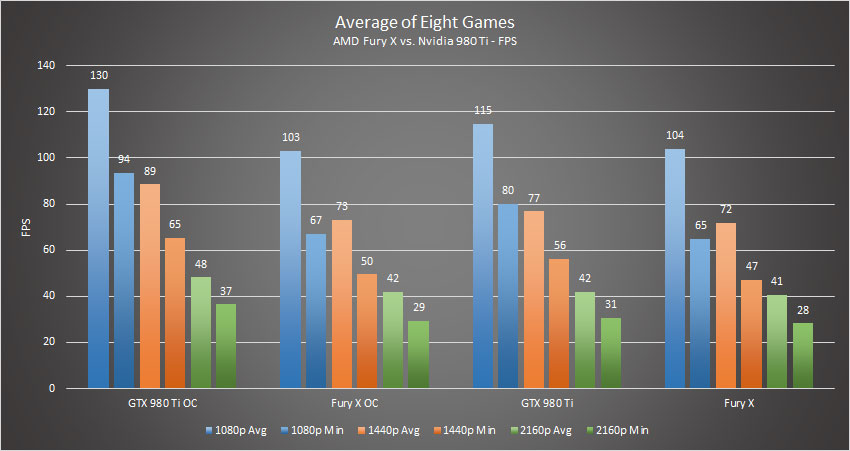
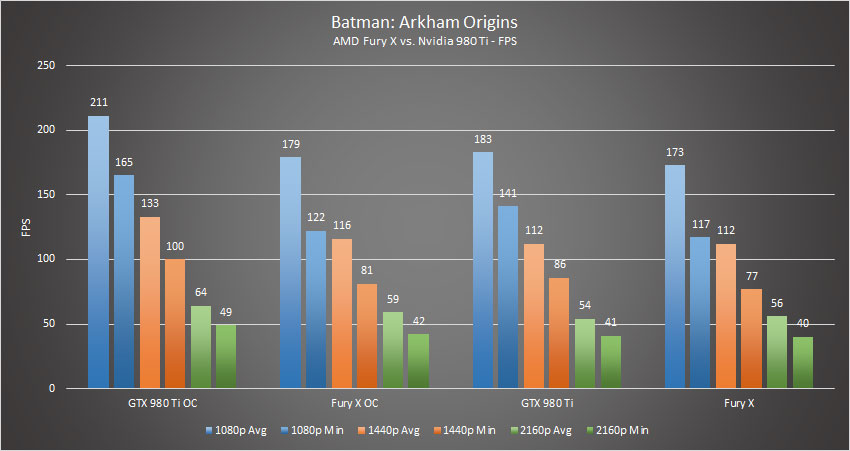
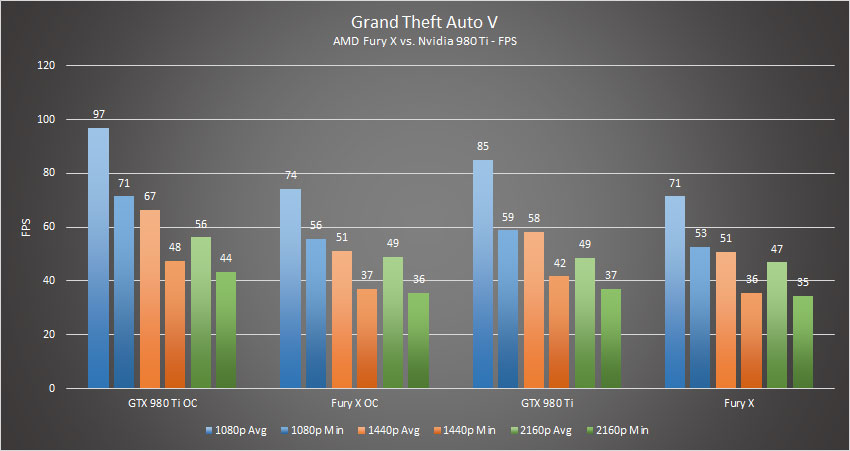
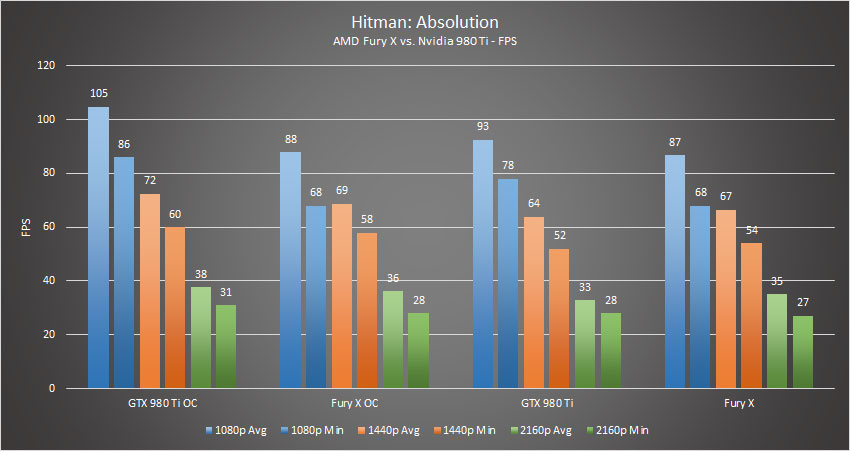
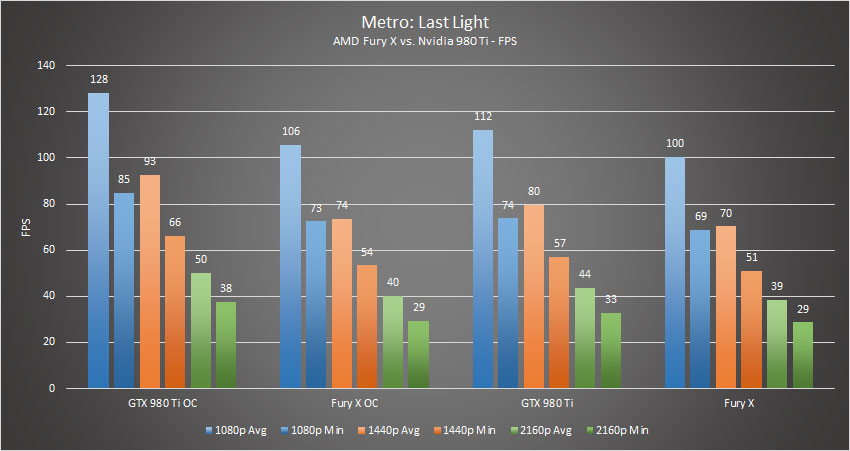
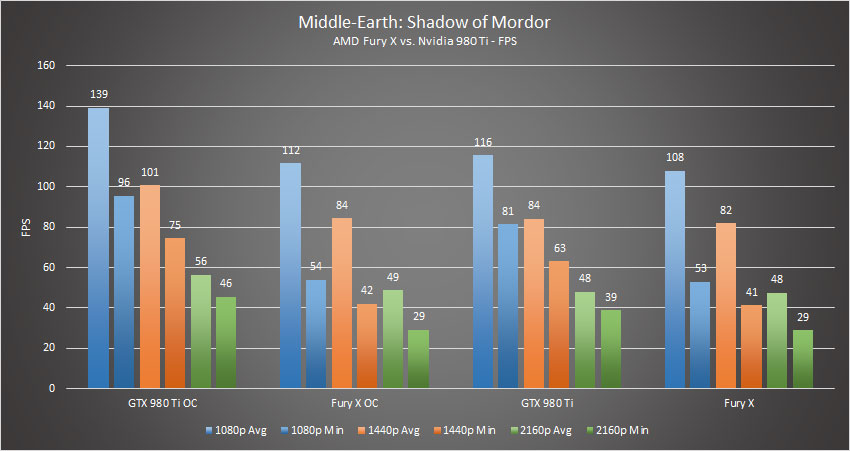
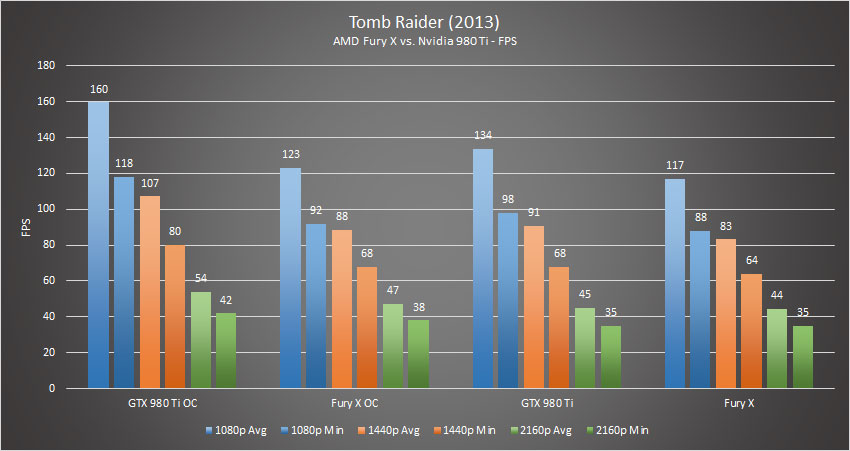
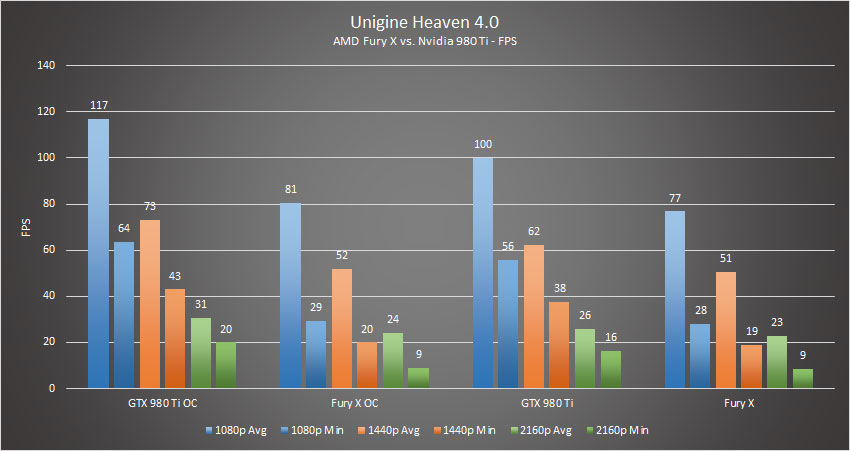
Note: 97th percentile average used for Heaven minimums.
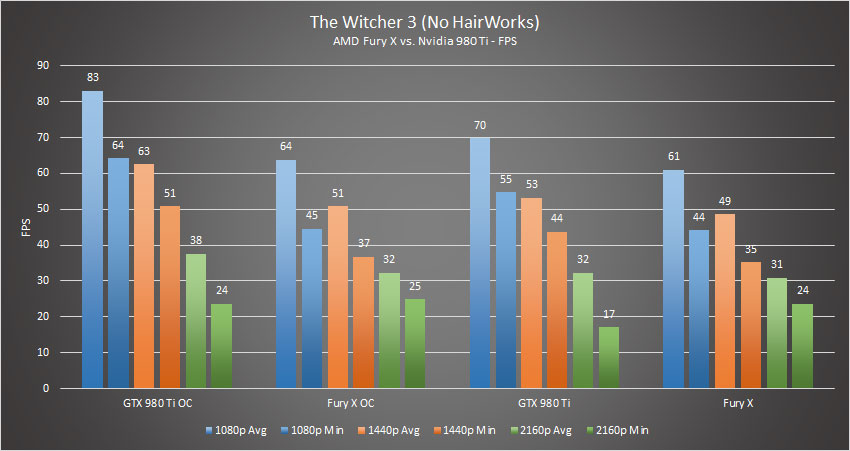
At stock clocks, the Fury X and 980 Ti are at least reasonably matched. AMD claims a couple of wins and two more ties at 4K, and on average we’re looking at less than a 10 percent delta between the two GPUs—and an even smaller difference at higher resolutions. The average of our eight core games gives Nvidia a ten percent lead at 1080p, seven percent at 1440p, and only three percent at 4K. Minimum frame rates favor Nvidia a bit more—18, 14, and six percent at 1080p, 1440p, and 4K—likely thanks to the 6GB VRAM on the 980 Ti. And, of course, AMD is doing this with liquid cooling and lower temperatures, while still using a bit more power; they’re running beta drivers as well, but that’s how things currently stand.
Throw in overclocking and the comparison becomes far more lopsided. At present, the best we’re able to manage with the Fury X is a seven percent overclock, while on the reference 980 Ti we’re able to hit +225MHz on the core and +900MHz (7,910MHz effective) on the GDDR5. That represents a 23 percent core overclock and a 13 percent memory overclock. And if you’re wondering, the Zotac 980 Ti AMP! Extreme goes even further; we were able to hit 1,300MHz on the core and 8,300MHz on the memory—stay tuned for the full review.
Looking at the overclocked results, it’s a clean sweep for the 980 Ti right now. Even games that traditionally favor AMD (e.g., Hitman: Absolution) are ruled by the overclocked 980 Ti. The smallest lead we recorded for the 980 Ti OC is around five percent, in Hitman at 1440p and 4K. In games where the 980 Ti already held a lead, there can be a chasm between the two cards; Heaven, for instance, has a 28 percent lead at 4K and a 45 percent lead at 1080p. Ouch. On average, the 980 Ti OC leads the Fury X OC by 26 percent at 1080p, 21 percent at 1440p, and 15 percent at 4K in average fps; looking at minimum fps, right now 980 Ti OC leads by 39/32/24 percent over Fury X OC. About the only consolation prize is that the overclocked 980 Ti has peak power use for the system that’s about 20W higher than the overclocked Fury X—426W vs. 408W—but that’s partly due to the rest of the system working harder to provide the increased performance, and overclockers aren’t usually ultra-concerned with needing a bit more juice to keep their system running at top speed.
To the Victor Goes the Spoils
And there you have it: AMD has plenty of work to do if they want Fury X to match the GTX 980 Ti consistently. Improving performance by 10–15 percent is certainly possible, and we’ve already seen Nvidia do that with driver updates since the launch of the Titan X. However, at least right now, AMD seems to be taking the Titan X approach to clock speeds with Fury X, meaning all of the cards are full reference models running reference clocks; at least the pricing is also consistent, though finding the Fury X in stock is another matter. The 980 Ti, on the other hand, is open for experimentation, and factory core overclocks of 10–25 percent are readily available, often at only a minor price premium. Even if you stick with the reference cards, it looks as though nearly all 980 Ti GPUs will happily run at 1,200MHz base, with boost clocks hitting 1,400MHz or more in some cases.
What we want to see from AMD in the coming weeks are two things. First, we want drivers that perform better than the current launch/beta 15.15 drivers. All indications are that AMD could net 10 percent or more performance with additional tuning, and that would be enough to match 980 Ti performance in most cases. Second, considering the “overbuilt” liquid cooling, we want to see voltage unlocks and HBM overclocking. If HBM can indeed be clocked 20 percent higher (600MHz base instead of 500MHz), and that results in another 10–15 percent improvement in performance, then we’d be looking at parity. That may not be the most exciting result if you want to argue about which graphics card is best, but stronger competition from Team Red can only help consumers in the long run.
But until/unless these improvements come to pass, the GTX 980 Ti is the best choice for gaming enthusiasts. It's fast, it's available, and it can overclock like a Swiss watchmaker hopped up on muesli.
The biggest gaming news, reviews and hardware deals
Keep up to date with the most important stories and the best deals, as picked by the PC Gamer team.
Follow Jarred on Twitter.
Jarred's love of computers dates back to the dark ages when his dad brought home a DOS 2.3 PC and he left his C-64 behind. He eventually built his first custom PC in 1990 with a 286 12MHz, only to discover it was already woefully outdated when Wing Commander was released a few months later. He holds a BS in Computer Science from Brigham Young University and has been working as a tech journalist since 2004, writing for AnandTech, Maximum PC, and PC Gamer. From the first S3 Virge '3D decelerators' to today's GPUs, Jarred keeps up with all the latest graphics trends and is the one to ask about game performance.


